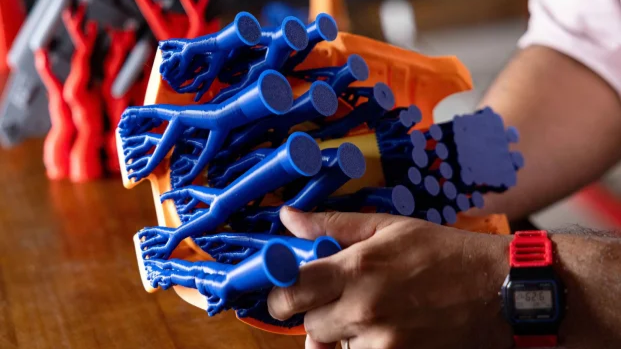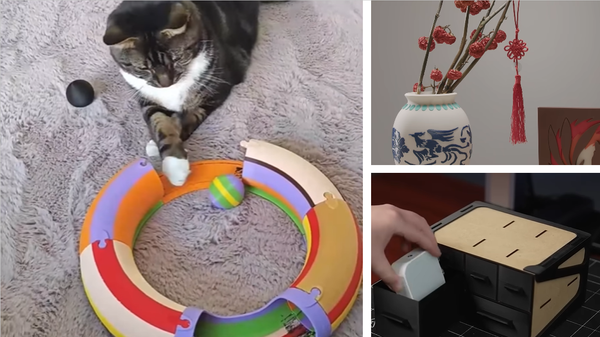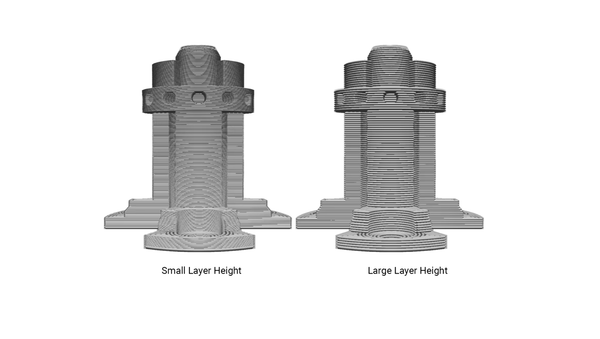How to Reduce 3D Printing Noise?

Are you tired of your 3D printer disrupting your peace with constant humming, grinding, and rattling sounds? You're not alone. Many 3D printing enthusiasts struggle with noisy printers that can be heard throughout their homes or workspaces. In this comprehensive guide, we'll explore everything you need to know about 3D printer noise levels, causes, and most importantly, how to achieve a truly quiet 3D printer setup.
Are 3D Printers Loud?
The short answer is: it depends on your printer and setup. 3D printer noise levels vary significantly based on the model, age, maintenance condition, and upgrades. Several factors make 3D printer noise particularly bothersome:
- Duration: 3D prints can run for hours or even days continuously
- Frequency: The high-pitched whining of motors and fans can be more irritating than the decibel level suggests
- Timing: Many users run prints overnight, making even moderate noise disruptive
The Impact of Noise on Your 3D Printing Experience
Understanding why 3D printer noise matters goes beyond simple annoyance:
User Experience Issues
- Distraction and Concentration: Continuous humming, whining, and rattling can make it difficult to focus on work or enjoy a peaceful environment
- Fatigue and Stress: Prolonged exposure to irritating noise increases fatigue and stress levels, potentially decreasing productivity and creativity
- Sleep Disruption: Many users wonder "is it bad to sleep next to a 3D printer?" The answer is that while not necessarily dangerous, the noise can impact sleep quality
Print Quality Concerns
- Reduced Print Quality: Vibrations from a noisy printer can translate into visible print defects such as layer shifting, ghosting/ringing, or distorted prints
- Inconsistent Results: Excessive vibrations can affect the precision of movements, leading to dimensional inaccuracies
Safety Considerations
While noise itself isn't dangerous, it often indicates underlying issues that could pose safety risks:
- Vibrations and Structural Integrity: Excessive vibrations can stress components and the supporting surface
- Loose Wiring: Vibrating wires can chafe against components, potentially causing shorts or exposed wires
- Component Failure: Prolonged vibration can loosen connections or damage electronic components
- Unstable Setup: A vibrating printer on an unstable surface could fall or cause other items to fall
How 3D Printers Generate Noise
To effectively reduce noise, it's crucial to understand where it comes from:
Stepper Motors: These precision motors move the print head and build platform through rapid electromagnetic switching, creating distinctive whining or humming sounds. Motor quality and current settings directly impact this noise level.
Cooling Fans: Multiple fans cool the hot end, print area, motherboard, and power supply. Stock fans are often the loudest component, especially when dirty or of poor quality.
Vibrations: Rapid movements generate vibrations that transmit through the printer frame and supporting surface, amplifying throughout the room.
Mechanical Issues:
- Misaligned extruder components
- Worn linear bearings
- Loose belts and pulleys
- Z-axis wobble from bent rods or loose couplings
How to Achieve a Quiet 3D Printer
Proper Placement
- Use a sturdy, level, and stable surface
- Avoid resonant materials like glass or thin wood
- Consider a concrete paver with anti-vibration pads for ultimate stability
Regular Maintenance
- Inspect and tighten loose screws, nuts, and bolts regularly
- Check belt tension and ensure pulleys are secure
- Clean fans to remove dust and debris that disrupt airflow
Lubrication
Apply high-quality, lightweight lubricant designed for 3D printers to:
- Linear rods and rails
- Lead screws
- Other moving components
Software Optimization
- Reduce print speeds to minimize vibrations
- Adjust acceleration and jerk settings for smoother movements
- Use linear advance features if available
Under-Printer Damping
- Rubber or silicone anti-vibration pads under printer feet
- Squash balls (double-yellow dot) as dampening feet
- Foam or rubber mats
- Install small rubber dampers between motors and the frame
- Use flexible couplings on Z-axis lead screws
Enclosure Solutions
Building or purchasing an enclosure provides multiple benefits:

- Significant noise reduction through sound containment
- Temperature stability for better print quality
- Protection from drafts and environmental factors
- Enclosures can be integrated with extraction and filtration systems to remove particles and fumes, creating a safer printing environment
Conclusion
Achieving a truly quiet 3D printer is entirely possible with the right combination of maintenance, upgrades, and environmental considerations. The key is to address noise systematically:
- Start with proper placement and basic maintenance
- Identify your primary noise sources
- Implement targeted solutions based on your budget
- Monitor results and iterate as needed
Remember that a quiet 3D printer isn't just about comfort—it often indicates better mechanical condition, leading to improved print quality and longer equipment life.




